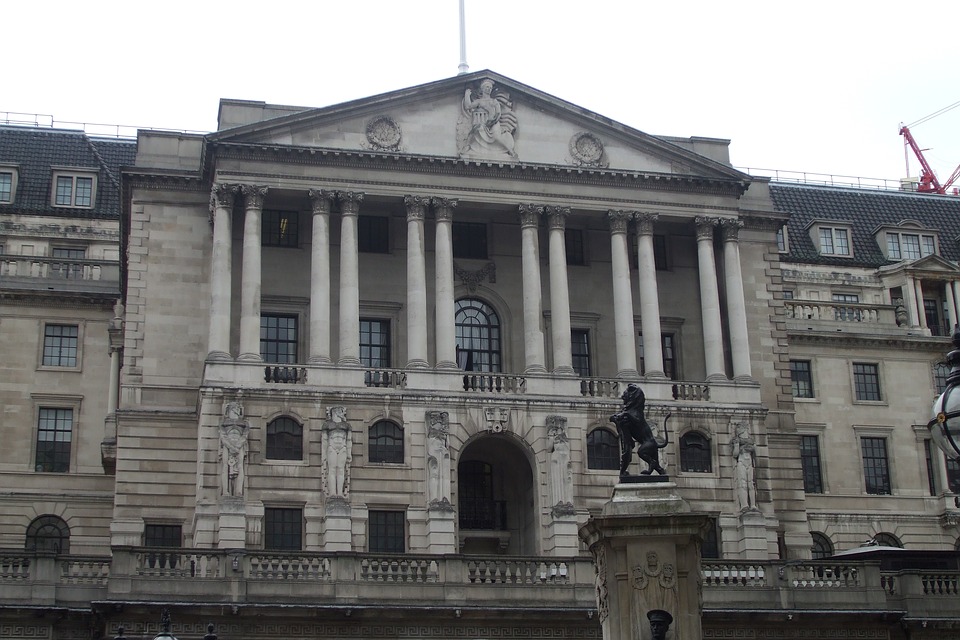Global financial markets will focus on this week’s European Central Bank meeting for further details on when the central bank plans to end its massive economic stimulus program.
Staying on the central bank front, traders will pay close attention to a monetary policy decision from the Bank of Japan for hints on when it will start withdrawing stimulus.
Meanwhile, investors will keep an eye on the monthly U.S. employment report to gauge how it will impact the Federal Reserve’s view on monetary policy in the months ahead.
Elsewhere, in the UK, investors will focus on a report on activity in the dominant services sector for further indications on the health of the economy and the likelihood of the Bank of England raising interest rates this year.
Market participants will also be looking ahead to monthly trade figures out of China amid recent signs that momentum in the world’s second largest economy remains strong.
Ahead of the coming week, Investing.com has compiled a list of the five biggest events on the economic calendar that are most likely to affect the markets.
1. European Central Bank Policy Meeting
The European Central Bank is widely expected to keep interest rates at their current record low levels and make no changes to its guidance on future policy when it holds its second meeting of the year at 1245GMT (7:45AM ET) on Thursday.
will hold what will be a closely-watched press conference 45 minutes after the rate announcement. How he views signs of undershooting inflation and any clues on when the central bank plans to end its €2.5 trillion stimulus program will be important.
Concerned about recent market turbulence, the strong and a dip in both headline and underlying inflation, officials prefer waiting, perhaps as late as the summer, before starting to signal the end of asset buys, three sources with direct knowledge of the discussion said last week.
The ECB will also unveil new macroeconomic projections, but sources familiar with the matter said they are unlikely to offer many surprises as growth and inflation are broadly on the same path as before.
The central bank cut its monthly bond purchases from €60 billion to €30 billion back in October, but extended the program until the end of September 2018, citing muted price pressures.
The euro-area economy is undergoing its broadest expansion in a decade. Yet inflation pressures remain feeble, with the headline rate falling last month to the lowest since 2016, underlining the ECB’s caution in removing stimulus.
Results of Sunday’s Italian general election as well as political developments in Germany will also be on the agenda.
2. BOJ Policy Announcement
The Bank of Japan is also seen keeping policy on hold at the conclusion of its two-day rate review on Friday, including a pledge to keep short-term interest rates at minus 0.1%, while painting a slightly better picture of the economy.
will hold a press conference afterward to discuss the decision. His comments will be monitored closely for any new insight on his views on inflation and how that can affect its current stimulus policies.
Investors will also be watching for comments on the , in light of its recent surge against the dollar.
There have been some indications recently that the central bank is setting the ground to begin discussions on winding back its quantitative easing program thanks to an improving economic outlook and hints of rising inflation.
Japan’s economy, the world’s third-largest, marked eight straight quarters of expansion in October-December, its longest such run since a 12-quarter stretch of growth during the 1980s boom years.
3. U.S. Employment Report
The U.S. Labor Department will release the nonfarm payrolls report for February at 8:30AM ET (1330GMT) on Friday, and it will be watched more for what it says about wages than hiring.
The consensus forecast is that the data will show jobs growth of , after adding 200,000 positions in January, while the unemployment rate is forecast to dip to a 17-year low of from 4.1%.
Most of the focus will likely be on average hourly earnings figures, which are expected to rise , following a similar gain a month earlier. On an annualized basis, wages are forecast to increase 2.9%, slowing slightly from 2.9% in January, which was the largest annual gain in more than 8-1/2 years.
A pickup in wages could be an early sign for higher inflation, supporting the case for higher interest rates in the months ahead.
This week’s calendar also features the and the .
Besides the data, markets will also be paying close attention to comments from a few Fed speakers this week for their views on the recent uptick in inflation and how that can affect monetary policy. Topping the agenda will be remarks from influential as well as , a known dove.
In his first congressional hearing as head of the Fed last week, Jerome Powell vowed to prevent the economy from overheating, while sticking with a plan to gradually raise interest rates. Those comments fueled speculation in equity markets over U.S. monetary tightening this year happening faster than expected.
Indeed, many economists have started to forecast four rate hikes this year, compared to the three the Fed currently predicts.
The Fed is scheduled to hold its next policy meeting on March. 20-21, with interest rate futures pricing in an of a rate hike at that meeting, according to Investing.com’s Fed Rate Monitor Tool.
Meanwhile, on Wall Street, retailers such as Target (NYSE:), Costco (NASDAQ:) and Dollar Tree (NASDAQ:) report results, as do a number of smaller chain stores, in what will be the last busy week of earnings season.
Elsewhere, news out of Washington D.C. is expected to keep investors on their toes, after President Donald Trump announced plans to slap tariffs on aluminum and steel late last week. He kept up pressure on trading partners on Saturday, threatening European automakers with a tax on imports.
4. UK Services PMI
A survey on Britain’s giant services sector due at 0930GMT (4:30AM ET) on Monday is forecast to inch up to from the previous month’s reading of 53.0.
While Britain’s economy is lagging behind the global recovery, it has held up better than the gloomy forecasts made at the time of the 2016 vote to leave the European Union.
The Bank of England kept interest rates steady last month, but signaled it was likely to raise rates sooner and by more than it thought a few months ago as it seeks to keep a grip on inflation.
Politics is also likely to be in focus, especially with the Brexit negotiations entering a key phase. Prime Minister Theresa May urged the European Union on Friday to show more flexibility in talks on future ties, saying Britain was ready to swallow the “hard facts” of Brexit but did not believe they prevented a successful trade deal.
5. China Trade Figures
China is to release February at around 0300GMT on Thursday.
Exports are forecast to have climbed from a year earlier, following a gain of 11.1% in the preceding month, while imports are expected to rise , after soaring 36.9% in January.
Additionally, on Friday, the Asian nation will publish data on February consumer and producer price inflation. The reports are expected to show that consumer prices rose last month, while producer prices are forecast to increase by .
China’s economy grew 6.8% in the fourth-quarter from a year earlier, helped by a rebound in the industrial sector, a resilient property market and strong export growth.
China’s annual two-week long National People’s Congress commencing on Monday will also grab some attention. The political meeting is used by leaders to set policies for the year and detail plans to curb financial risk, air pollution, and excess industrial capacity.
Investors will also want to see how the world’s largest steel producer might react to Trump’s plans to impose heavy import tariffs on steel and aluminum.
Stay up-to-date on all of this week’s economic events by visiting: http://www.investing.com/economic-calendar/
Source: Investing










